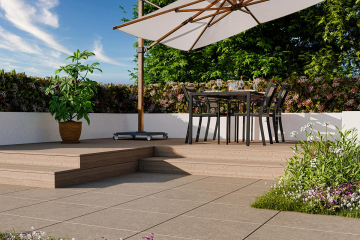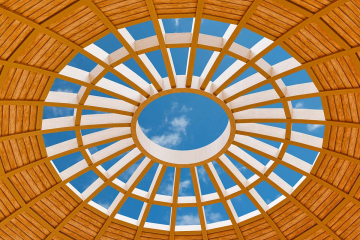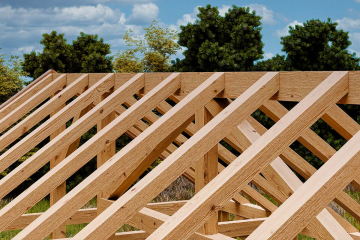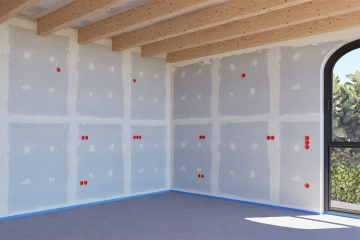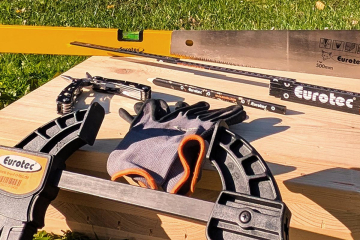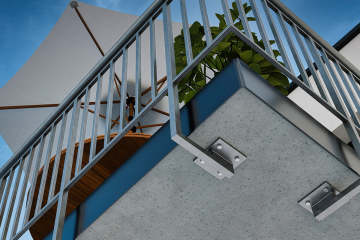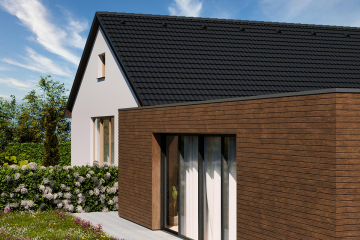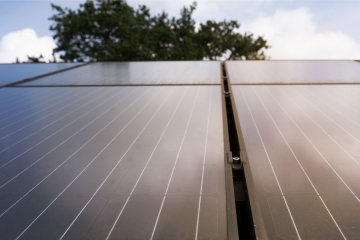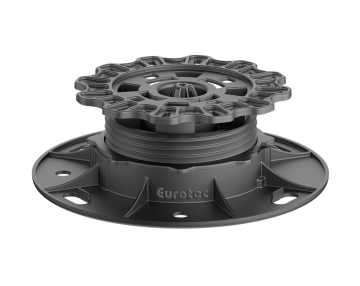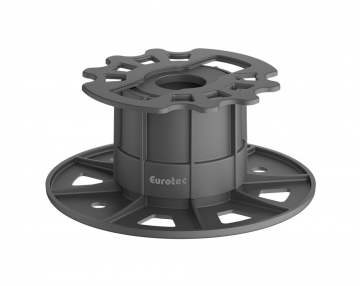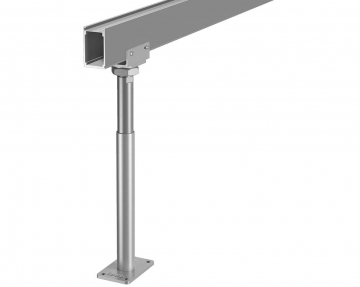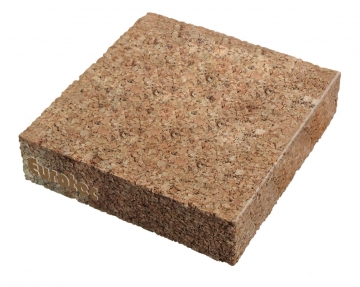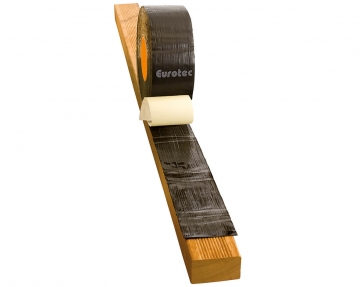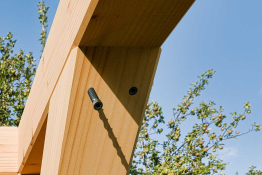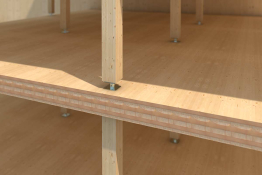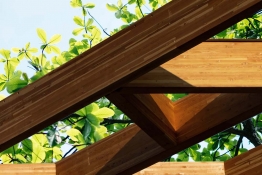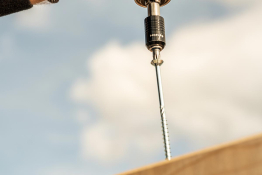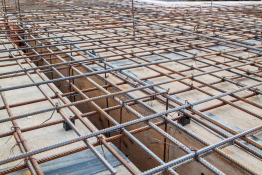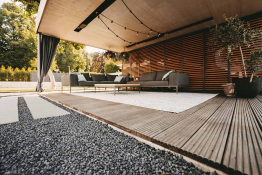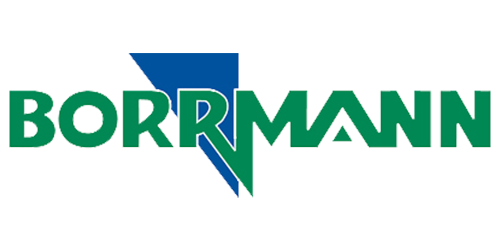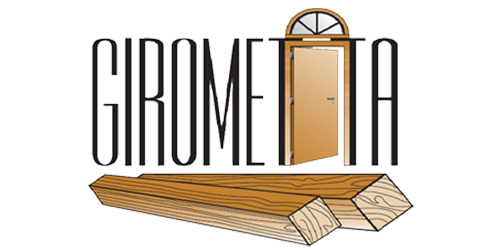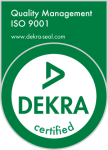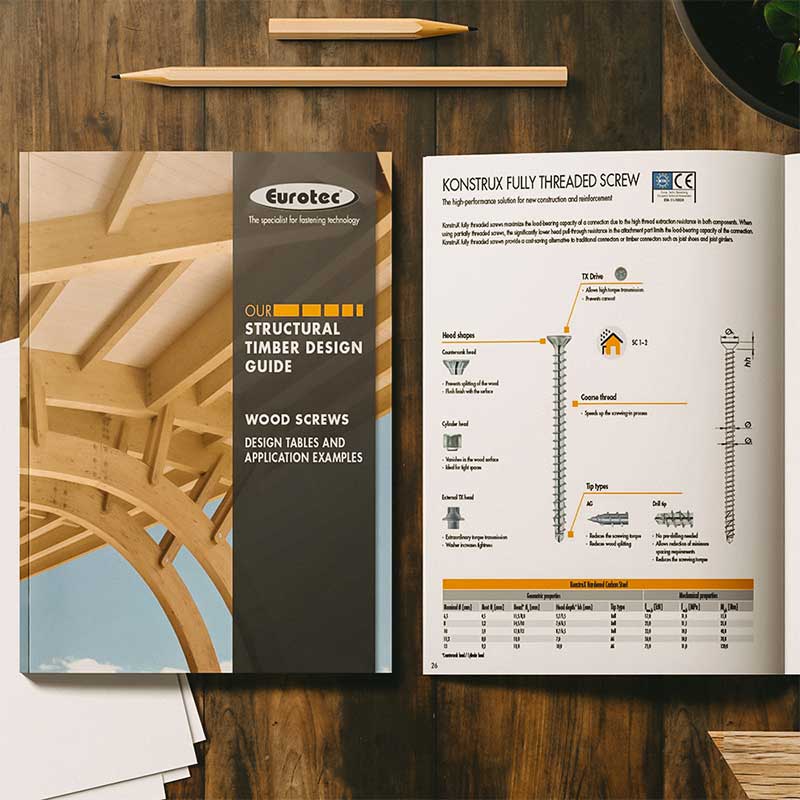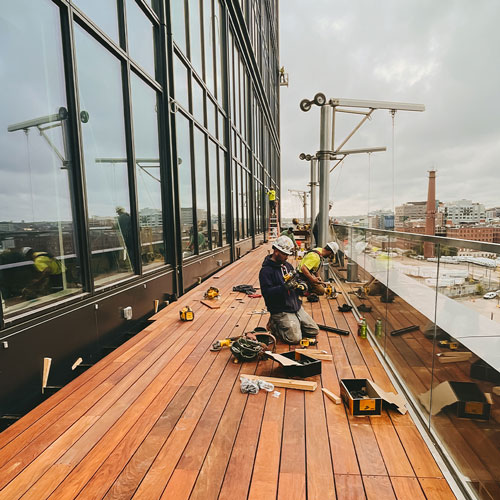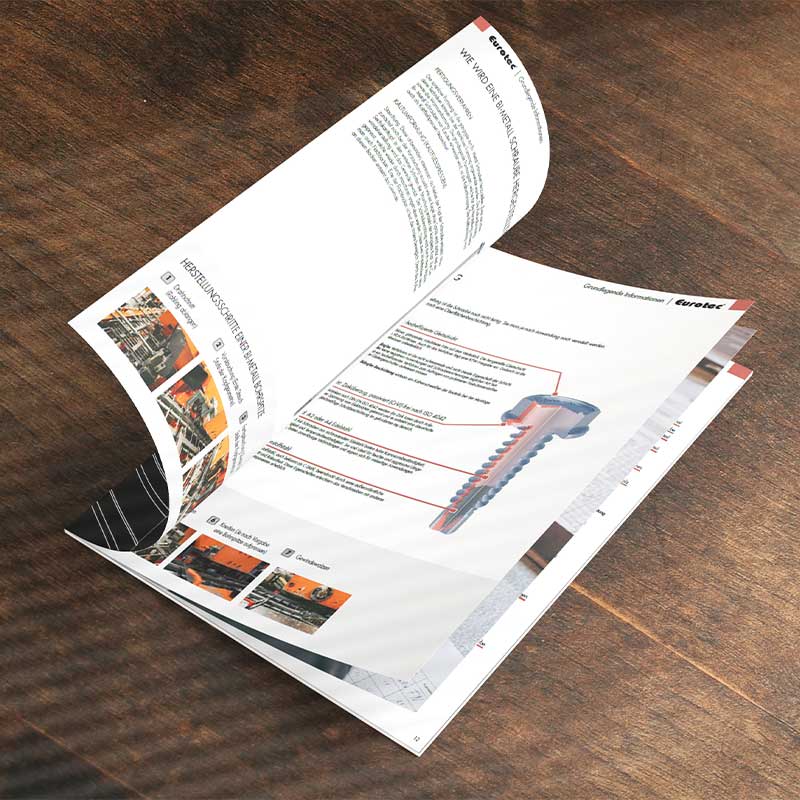Wood protection in deck construction: ensuring durability through structural and chemical measures
Created on: 2 June 2025
Chemical & structural: Wood protection in deck construction
Why is wood protection necessary for decks?
Surface protection plays a crucial role in deck construction, as deck coverings can change visually over time. Therefore, factors such as the durability and resistance of the materials used must be ensured on an ongoing basis. Wooden decks in particular are permanently exposed to weathering, UV radiation, moisture and mechanical wear. Various protective measures are required to counteract these negative effects. A basic distinction is made between chemical and structural wood protection, which should be combined if necessary.
Chemical wood preservatives: Protection through impregnation, stains and oils
Function and application of chemical wood preservatives
Wood protection in outdoor areas is essential, as structural components are often permanently exposed to the elements and must therefore withstand high levels of stress. To make timber more resistant — or even immune — to moisture, insect or fungal attack, chemical wood preservatives such as impregnations, stains or oils can be applied.
Overview of chemical wood preservation methods
Chemical wood preservation is carried out using various methods, e.g. impregnation. During impregnation, protective agents are worked deep into the wood, making it more resistant to moisture and pests. Coatings such as glazes, varnishes or oils form a protective layer on the surface that is water-repellent and offers UV protection. With glazes and oils, it is always important to carry out follow-up treatment and regular maintenance measures in order to further extend the life of the deck. The product of choice should be suitable for outdoor use and, ideally, environmentally friendly. However, chemical wood preservation should only be used in deck construction or as a supplement if all structural measures are insufficient.
When choosing protective agents for treating wood outdoors, make sure they have a full declaration or a RAL quality mark!
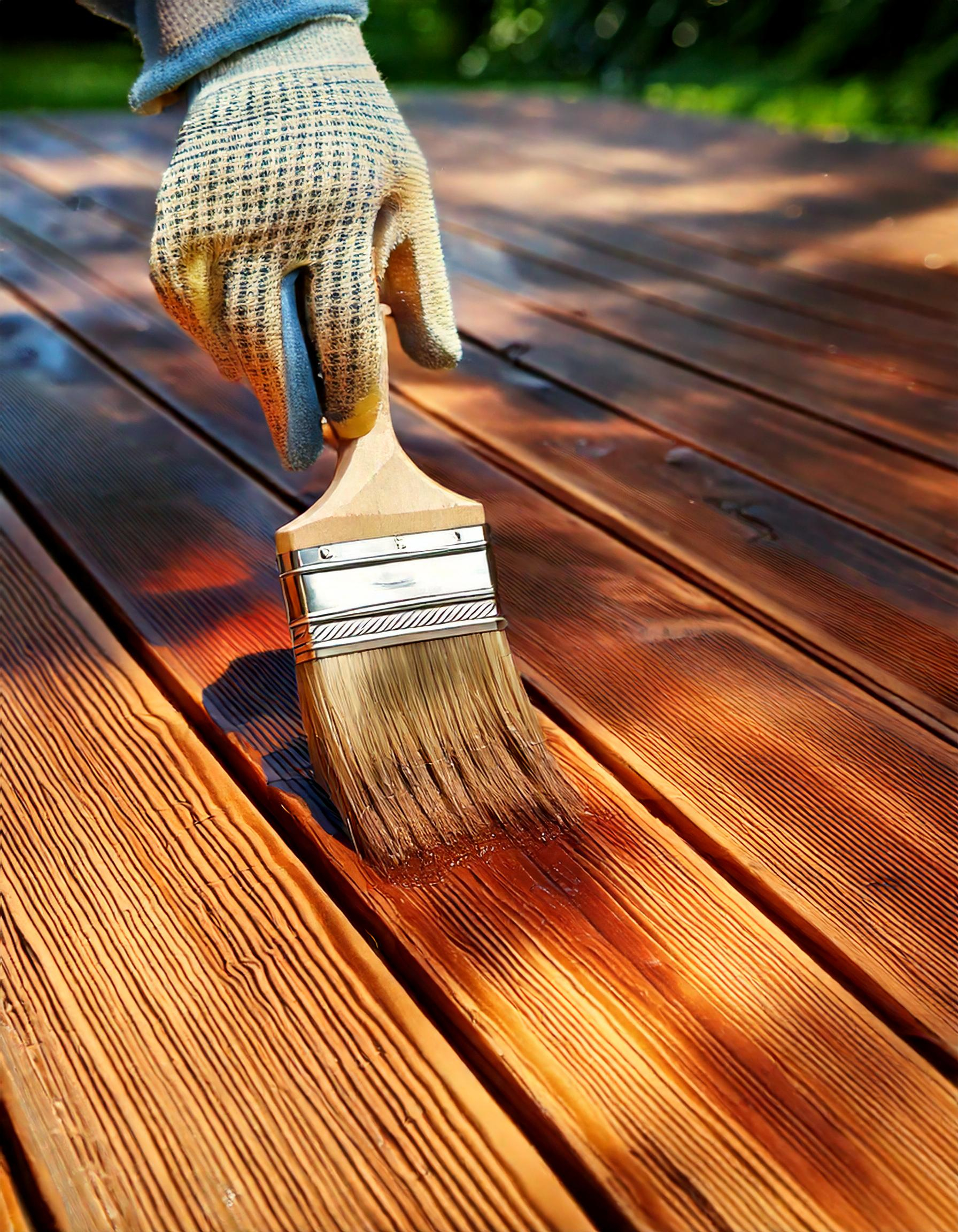
Structural wood protection: Construction measures for durable decks
What is structural wood protection?
Structural wood protection refers to all construction measures that prevent the building material wood from being exposed to excessive moisture. In contrast to chemical wood protection, structural wood protection for a deck relies on professional construction methods and resistant, durable materials. For the construction of a wooden deck, this means sensible planning and installation to prevent damage and ensure durability. Forward planning ensures the necessary wood protection right from the start.
DIN 68800-2: Standard for preventive wood protection in construction
In connection with constructive wood protection, structural wood protection measures also play an important role: DIN 6880-2 is part of the DIN 68800 series of standards, which deals with wood protection in construction. In detail, this part of the standard covers preventive structural measures for wood as a raw material without impairing it with chemical wood preservatives. In this case, the focus is on structural precautions.
Structural wood preservation measures are always preferable to chemical measures!

REAR VENTILATION
The wooden planks are mounted on spacers or substructures to allow air circulation and prevent waterlogging.
The Dista strip 2.0 acts as a spacer here, creating a 7 mm gap between the wooden panel and the substructure and promoting rear ventilation.
SLOPE
The deck is slightly sloped so that rainwater can drain away easily and no waterlogging occurs on the surface.
To create a slope (1–2%) and thus ensure easy water drainage, our self-levelling adjustable feet (e.g. SL PRO, SL BASE) are ideal.
WEATHER PROTECTION
An overhang or roof protects the deck from direct weather conditions such as heavy rain and intense sunlight, which means:
- less standing water
- less dirt
- less moisture absorption by the wood, thus reducing the risk of rot and mould
- less UV exposure
Important measures for effective structural timber protection
- Prevent moisture from affecting timber during transport and storage
- Timber should have a maximum moisture content of 20% when installed
- Select durable types of timber
- Prevent water accumulation (e.g. by using slopes, DrainTec drainage system)
- Optimal and permanent rear ventilation of the substructures and between the wooden floorboards (e.g. using Protectus wood protection tape)
- Avoid contact with the ground use adjustable feet, barrier layers, spacers
- Splash protection through deck roofing, roof overhangs or canopies
Special procedures are only necessary if the basic measures are not sufficient to reduce the risk of moisture damage. The aim of DIN 68800-2 is to limit the use of chemical wood preservatives to the absolute minimum. Good planning and construction can already provide sufficient protection.
Conclusion: Combination of planning, construction and protective measures
Effective surface protection in deck construction is essential to maintain the aesthetics and service life of unprotected timber decking. Structural wood protection and chemical wood protection are the main methods of protection in this area. Structural measures form the basis here, as they are primarily intended to prevent water ingress and, thanks to appropriate construction methods, enable rapid drainage. Chemical wood protection, on the other hand, provides additional sealing of the surface and extends cleaning and maintenance intervals. The deck construction is optimised by robust and high-quality fasteners, the right substructure and appropriately used weather-resistant building materials. Taking all these aspects into account, the deck not only scores points for its appearance, but also for its functionality and durability over the years.
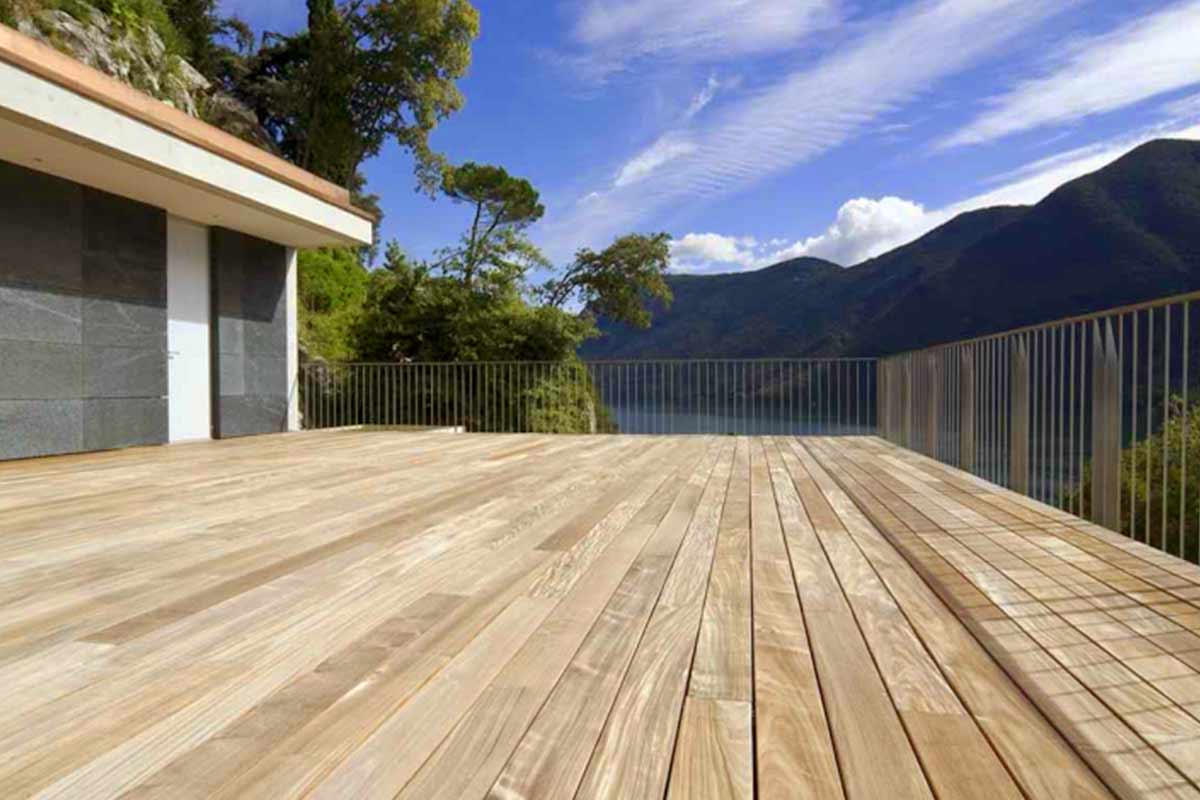
Do you want to plan and build a terrace?
Read our article on “Outdoor Terraces” and get preliminary planning tips as well as important information about suitable fasteners and the requirements for a terrace in different usage classes.

Plan Your Terrace Project with Eurotec
Are you planning to build a new terrace? Support your project with the Eurotec Terrace Planner. With our free terrace software, we help you plan individual terrace projects online.

Do you still have any technical questions?
We’ll be happy to advise you on your construction project!
Create a ticket now so we can help you quickly and efficiently — or use our free calculation software for your planning.
Other technical articles
Here you’ll find more technical articles with comprehensive content you need to know on the construction site or for individual projects—whether you’re just getting started or already have years of experience.


 Deutsch
Deutsch  English
English  Dansk
Dansk  Español
Español  Italiano
Italiano  Français
Français  русский
русский  Polski
Polski 